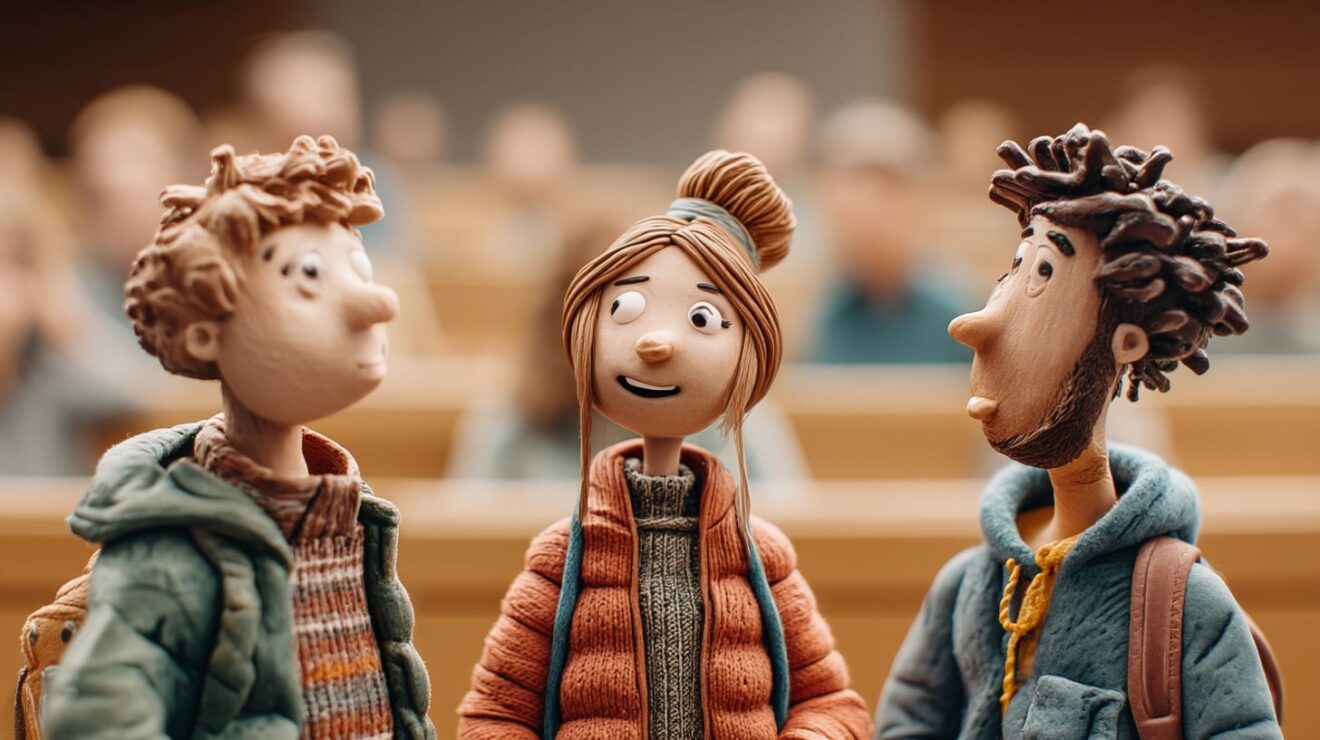School and other learning environments are often a safe place for students who have difficult home lives.
I know, I was one of those students. I take that knowledge into every classroom that I enter, and my understanding of student engagement and student experience are woven into my pedagogy of care and teaching to transgress.
I cannot, (and do not wish to!) separate my lived experience from my teaching. As someone who dropped out of the university that I now work at, I do have an interesting insight into building community and belonging into the curriculum.
As I wrote here with Lisa Anderson, we require a radical shift in how we consider the needs of students. I want every student in my classroom to experience it as a safe and welcoming space.
These are not buzzwords or trends, it is how I ensure that students are able to learn – I want them to be in the room. Teaching is a relational activity that requires commitment, experience, honing our craft and being willing to adapt.
The university sector is not in a good place, and as committed as I am to my research, it is teaching that brings me joy and new ideas every single time I enter the classroom. When we teach to transgress, it is for us as much as it is for the students.
The classroom reminds me of what is possible. Engaging strongly with the literature of the UK’s leading emergency and disaster planner, Lucy Easthope, I recognise the education will be impacted forever by the pandemic, and I want to play my part in the recovery.
Crime, justice and the sex industry
I lead the largest optional final year module in my department, with 215 registered students, based on my 23 years’ experience of the sex industry. It was a community of care that got me here, with colleagues from around the country (and globe!) sharing material and ideas with me when I launched this module in 2020. Collaboration and teaching go hand-in-hand and we must allow time for this.
The module is underpinned by my nonlinear pedagogy which I write about here. The design empowers students to have control over the direction and pace of their learning. All content is uploaded to our virtual learning environment Canvas in week one. There are weekly recorded lecture summaries, and 2-hour weekly workshops.
The content also includes a comprehensive library reading list, weekly reading folders, watch folder and collaborative tools.
This year the module is celebrating its fifth birthday and the student engagement is better than ever before. Here are some things that I have learned and that I am reflecting on.
A welcoming classroom and learning names
Where possible, I always enter the classroom ten minutes before class begins (this is definitely not always possible in a large and busy campus with extreme demands on estates and our time) to provide a prepared and calm setting for students to arrive. This is also helpful for me as a neurodiverse teacher.
I like to greet students as they arrive, and learn names wherever possible (photo class lists are your friend).This sets the tone for our warm and welcoming teaching community. It demonstrates the way in which we will invite peers to contribute and talk through the content. It may seem a small thing, but it makes a huge difference to teaching and learning.
Front-loaded prep
As a dyslexic I need to be prepared. This is a large module, and a busy teaching load. I spend the weeks before semester begins frontloading my prep so that I am ready to go. This involved re-recording the summary E lectures, updating workshop materials, sheets, reading folders, module guides, etc.
Visitors to my office are surprised to see a row of 12 piles along the floor- with each week’s content printed out, highlighted, and ready to go. I am always very grateful once semester starts that I took the time to do this. It creates a calm tone to classes that students explicitly comment on.
Lesson plans
This year I went old-school in multiple ways, including buying a hardback lesson planner, in which I mapped out the learning objectives for every workshop – mapping against learning outcomes for the module.
Physically mapping these out, with prompts, links to the readings and case studies, was something that students positively picked up on. This also ensured adaptability and that I was reflecting upon and updating my material. Students need calm and expert guidance; experienced teachers are key.
Workbooks
Acting on student feedback from the previous year, I designed a workbook that students can print out or use digitally. Students always make a lot of notes on this module, and the workbook helps them with organising those thoughts. In class, I was very pleased to see rows of pink workbooks looking back at me.
The workbook also includes space for questions, and learners can bring this to my student support hours. I have been learning a lot from school teachers, and recognising how much extra structure students need post-pandemic.
Learning through tempo
I made an active decision this year to experiment with the tempo of each workshop class, with differences even between some workshop groups. This was in response to student feedback who wanted some slower sessions in order to read in class, and more time to talk with their groups/peers.
This was music to my ears (pun absolutely intended) and it made me reflect on the pace and rhythm of my classes. I am a high-energy teacher and I like to pack a lot into classes, but stripping (pun not intended!) some of this back to create quieter time (for class reading) and slower sessions with more time for groups to talk, has been a game-changer. Students actively requesting some slower workshops so they could read together in class, was amazing to witness. Students reacted overwhelmingly positively to my ability to respond and adapt.
Learning through play
It is interesting in this post-disaster period of the pandemic to witness students enjoying, and requesting, playful activities in class. As I argue here, we need to build community into the curriculum to boost attendance.
Poster paper and felt tip pens might have attracted horrified faces a few years ago and a low uptake, but this year, every single “play” activity that I have offered has been taken up by almost every student. I always offer a range of engagement tools, with non-verbal options such as our collaborative google doc, padlet, and other online tools, and I offer the option for sheets, paper, pens etc.
A welcoming, hospitable classroom where students know they are being considered, pays dividends in engagement and mutual respect. Once students feel safe and able to take risks, no matter how low-stakes, they open up, and engage in difficult and complex debates.
One group activity looked at sexual entertainment venue closures using five different pieces of coloured card to map out key findings from two different journal articles, identify and apply concepts from earlier weeks in the module, examples of venue closures, and examples of campaign group discourse.
A “fun” activity that involves deep critical thinking and the ability to successfully weave together multiple forms of evidence to formulate a convincing argument. I then took a photo of the giant map we all created across the module. Every single student wanted to take part; students are actively seeking community and togetherness within the classroom.
As Treasa Kearney and I argue here, campus should be a treasured space that offers valuable connections to students.
The activity with foam stickers, which I thought students would resist, was the most popular activity of the semester (after the guided walk, below). Through the mechanism of light-hearted play, students successfully navigated a tricky and sensitive topic examining the harms, dangers and exploitation associated with online sex work. We ended up with students stickering their laptops, phones, their workbooks, and themselves! We cannot forget that these are all students of the pandemic, they missed out on so many opportunities to interact with peers. They are embracing every opportunity to connect with each other within timetabled sessions.
Guided walk
Another activity on the module (and the one that students most favourably comment on) is our guided walk of sexual entertainment venues in Liverpool city centre. I provide online material for accessibility purposes recognising that not all students can walk around the city, or may not wish to.
For students who attend, we map out the city in terms of gendered harm and risk, and I give a lecture inside of a sexual entertainment venue that opens exclusively for our class. This brings the Policing and Crime Act 2009 to life, and gives students a unique insight into what the key texts are discussing. It is also very much a community building exercise, with a large proportion of our module cohort in attendance. Learning outside of the classroom is very important for student engagement.
Scaffolding learning
I intentionally choose to layer texts: curating texts of various complexity, using tools such as padlet. Students choose what texts to access based on their own areas of interests and confidence, as they progressively build up skill and academic knowledge of the area. This ensures that the module is accessible to all students, with learners challenged at a point which feels appropriate for them.
It also means that students always have supported content to work with. In week ten, we looked at the media, and we returned to a key text from week eight, to apply three media myths from a journal article to three documentary clips. Using worksheets, the students demonstrated a sophisticated ability to apply a criminological concept to media sources.
Responding to ongoing feedback
Building a rapport with students through modelling a pedagogy of care and inclusion, equips students with the ability to provide feedback throughout the semester. Students appreciate the wealth of resources available from the beginning of semester, but others may feel overwhelmed with choice.
In rapid response to student feedback, I started to provide recommended readings in addition to the large selection. Students appreciated this speedy closing of the feedback loop, and being valued co-producers of the module approach. The student feedback for the module was the best yet.
Accessible assessment as the default position
With growing numbers of students experiencing health issues, it is good practice to think of accessibility as the default position, not an additional bolt-on. I am in favour of different modes of assessment that students can choose from, or developing an assessment that can be approached in different ways. I have written here about my letter assessment, inspired by the work of Katie Tonkiss. Students often feel worried about “academic writing”, and this assessment allows students to use the first person, and to use a more colloquial writing tone if desired. The students develop a nuanced, convincing and influential writing style, with the ability to hold conflicting and competing harms in tension.
Ultimately, it is about remembering that teaching is a huge privilege and blessing. We get to have an impact on so many people and play a part in shaping ideas and innovations of the future. I will never lose the gratitude for getting to do this job and remembering where I come from.












